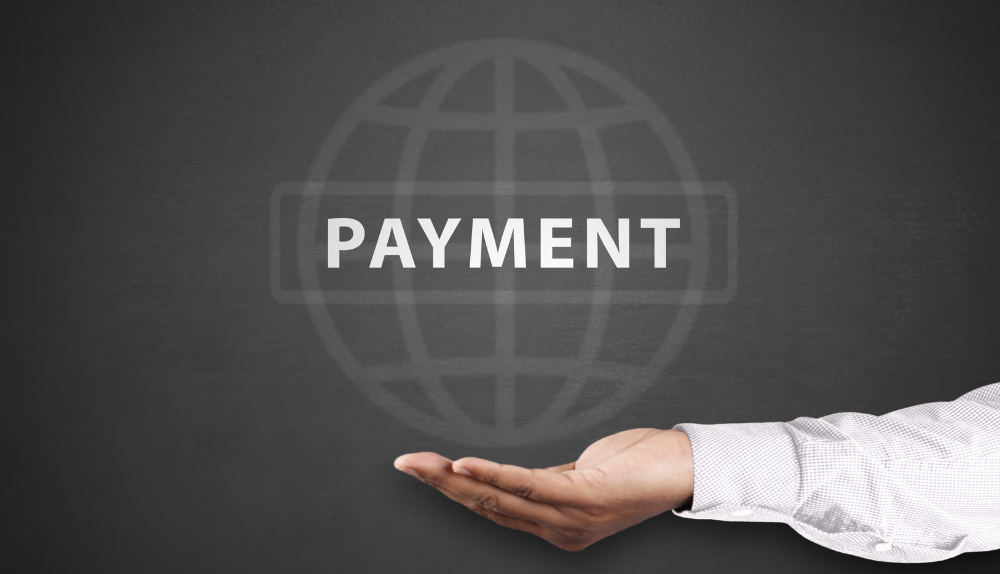
By max June 7, 2023
In today’s digital age, businesses face the constant challenge of managing high-risk transactions securely and efficiently. A crucial component in this process is finding the right payment gateway that can effectively handle such transactions. With the ever-evolving landscape of online payments, businesses must stay ahead by selecting a high-risk payment gateway that offers the best features to protect against fraud, ensure data security, and streamline operations. In this article, we will explore the key features to look for in a high-risk payment gateway, enabling businesses to make informed decisions and safeguard their financial transactions in an increasingly risky online environment.
High-Risk Payment Gateways Explained
High-risk payment gateways play a vital role in facilitating secure online transactions for businesses operating in industries with elevated risk levels, such as e-commerce, online gaming, adult entertainment, and travel services. Unlike standard payment gateways, high-risk gateways are specifically designed to handle transactions that are deemed to have a higher probability of chargebacks, fraud, or legal and regulatory complications.
One of the primary functions of a high-risk payment gateway is to manage and mitigate the risks associated with these transactions effectively. These gateways employ advanced fraud detection and prevention mechanisms, utilizing cutting-edge technologies like machine learning algorithms, AI-powered analytics, and behavioral pattern analysis. By continuously monitoring and analyzing transaction data in real-time, high-risk gateways can identify suspicious activities and swiftly respond to potential fraud attempts, providing a higher level of security for both businesses and customers.
Data security is another critical aspect that high-risk payment gateways prioritize. They employ robust encryption protocols, secure socket layers (SSL), and tokenization techniques to ensure that sensitive customer information, such as credit card details, remains secure throughout the payment process. Compliance with industry standards, such as Payment Card Industry Data Security Standard (PCI DSS) requirements, is strictly maintained to guarantee the protection of personal and financial data.
Furthermore, high-risk payment gateways offer comprehensive reporting and analytics capabilities. These features provide businesses with detailed insights into transaction trends, customer behavior, and chargeback rates, enabling them to make informed decisions and optimize their risk management strategies.
Selecting a reliable and feature-rich high-risk payment gateway is crucial for businesses aiming to mitigate risks, protect customer data, and ensure smooth and secure online transactions in today’s complex digital landscape. Overall, high-risk payment gateways are specialized solutions designed to meet the unique needs and challenges faced by businesses operating in industries with elevated risk levels. By incorporating advanced fraud prevention measures, robust data security protocols, and insightful analytics, these gateways offer businesses a secure and efficient platform to manage high-risk transactions effectively.
How Does a High-Risk Payment Gateway Work?

A high-risk payment gateway operates similarly to a standard payment gateway but with additional features and functionalities to cater specifically to businesses in industries with higher risk levels. Here’s a breakdown of how a high-risk payment gateway works:
Integration
Businesses integrate the high-risk payment gateway into their online platforms, such as e-commerce websites or mobile apps. This integration typically involves the use of APIs (Application Programming Interfaces) provided by the payment gateway provider.
Transaction Submission
When a customer initiates a payment on the business’s platform, the payment details are securely transmitted to the high-risk payment gateway. This includes information like credit card details, billing address, and transaction amount.
Transaction Validation
The high-risk payment gateway performs various validation checks on the transaction details to ensure their accuracy and completeness. This may involve verifying the authenticity of the credit card, checking for any suspicious or blacklisted card numbers, and confirming that the transaction falls within the specified risk thresholds set by the business.
Fraud Detection and Prevention
High-risk payment gateways employ advanced fraud detection mechanisms to identify potentially fraudulent transactions. They use sophisticated algorithms and machine learning techniques to analyze various data points, such as transaction patterns, customer behavior, and historical fraud patterns, in real time. If a transaction is flagged as suspicious, the payment gateway may trigger additional verification steps or decline the transaction altogether.
Secure Payment Processing
Once a transaction is deemed valid and secure, the high-risk payment gateway securely transmits the payment information to the acquiring bank or payment processor for further processing. The payment processor communicates with the customer’s issuing bank to authorize the transaction and facilitate the fund transfer.
Response Handling
The high-risk payment gateway receives the response from the acquiring bank or payment processor, indicating the transaction status. This information is relayed back to the business and the customer, informing them whether the payment was successful or declined.
Reporting and Analytics
High-risk payment gateways provide businesses with comprehensive reporting and analytics tools. These tools offer insights into transaction data, chargeback rates, customer behavior, and other key metrics. This data helps businesses optimize their risk management strategies, identify trends, and make informed decisions to improve their payment processes.
Overall, a high-risk payment gateway acts as a secure intermediary between businesses, customers, acquiring banks, and payment processors, ensuring that high-risk transactions are processed securely while mitigating fraud risks and complying with industry standards and regulations.
Industries That Require High-Risk Payment Gateway

Several industries require high-risk payment gateways due to the nature of their business operations and the increased risks associated with their transactions. Some of these industries include:
E-commerce
Online retail businesses often face a higher risk of fraudulent transactions, chargebacks, and disputes. With the high volume of online purchases and the anonymity of the internet, e-commerce businesses benefit from high-risk payment gateways that offer advanced fraud detection and prevention measures.
Online Gaming and Gambling
The online gaming and gambling industry involves monetary transactions related to betting, gambling, and gaming activities. Due to the potential for fraud, legal and regulatory considerations, and high chargeback rates, high-risk payment gateways are crucial for securely processing payments within this industry.
Adult Entertainment
Adult entertainment businesses deal with sensitive content and face higher risks associated with customer chargebacks and fraud. A high-risk payment gateway helps ensure the secure and discreet processing of payments while protecting the privacy of customers.
Travel and Tourism
The travel industry, including airlines, hotels, and travel agencies, often encounters high-risk transactions due to factors such as international bookings, last-minute cancellations, and potential fraud attempts. A high-risk payment gateway offers robust fraud prevention measures and can handle the complexities involved in travel-related transactions.
Nutraceuticals and Supplements
The sale of nutraceuticals, dietary supplements, and other health-related products often falls under the high-risk category due to legal regulations, potential chargebacks, and recurring billing models. A high-risk payment gateway assists businesses in managing these risks and maintaining compliance with relevant laws and regulations.
Forex and Binary Options
Forex trading and binary options platforms involve high-value transactions and potential regulatory complexities. High-risk payment gateways facilitate secure and efficient fund transfers, ensuring compliance with regulatory requirements and minimizing the risks associated with financial trading.
Subscription-based Services
Businesses offering subscription-based services, such as software as a service (SaaS), membership sites, or online content platforms, often face challenges related to recurring billing, customer churn, and chargebacks. High-risk payment gateways offer features like subscription management and recurring billing support to streamline payment processes and reduce risks.
It’s important to note that the need for a high-risk payment gateway can vary based on the specific risk profile of a business within these industries. Each industry may have its unique challenges and requirements, and businesses should carefully evaluate their payment processing needs to select the most suitable high-risk payment gateway for their operations.
Advantages of Payment Gateway for High-Risk Businesses
Payment gateways offer numerous advantages for high-risk businesses, helping them manage their transactions securely and efficiently. Here are some key advantages of using a payment gateway for high-risk businesses:
Enhanced Fraud Protection
High-risk businesses are more susceptible to fraudulent transactions and chargebacks. Payment gateways designed for high-risk industries employ advanced fraud detection and prevention tools, such as real-time transaction monitoring, AI-powered fraud algorithms, and behavioral analysis. These features help identify and flag suspicious activities, reducing the risk of fraudulent transactions and mitigating potential financial losses.
Chargeback Management
Chargebacks can be a significant challenge for high-risk businesses, resulting in financial losses and reputation damage. Payment gateways often offer chargeback management tools that assist businesses in effectively handling and disputing chargeback claims. These tools help streamline the chargeback resolution process, improve dispute response time, and increase the chances of successful chargeback reversals.
Compliance with Industry Regulations
High-risk industries are often subject to specific regulations and compliance requirements. Payment gateways catering to high-risk businesses understand these industry-specific regulations and ensure compliance with standards like the Payment Card Industry Data Security Standard (PCI DSS). By partnering with a compliant payment gateway, high-risk businesses can meet their legal and regulatory obligations, protecting both their customers’ data and their reputation.
Robust Data Security
Data security is paramount for high-risk businesses, as they handle sensitive customer information and financial data. Payment gateways implement strong security measures, such as data encryption, tokenization, and secure socket layers (SSL), to safeguard customer data throughout the payment process. This instills confidence in customers, encouraging them to make transactions and establishing trust in the business’s commitment to data protection.
Global Payment Acceptance
High-risk businesses often operate internationally, catering to customers from various regions. Payment gateways enable businesses to accept payments from customers around the world by supporting multiple currencies and offering localized payment options. This flexibility in payment acceptance enhances the customer experience, increases conversion rates, and expands the business’s reach in the global market.
Seamless Integration and User Experience
A well-designed payment gateway provides a user-friendly interface, supports quick and convenient transactions, and minimizes the risk of transaction abandonment. Payment gateways are designed to integrate smoothly with various platforms, including e-commerce websites, mobile apps, and other online platforms. This integration ensures a seamless user experience for customers during the payment process, reducing friction and enhancing customer satisfaction.
Comprehensive Reporting and Analytics
Payment gateways offer robust reporting and analytics features that provide high-risk businesses with valuable insights into their transactions, customer behavior, and payment performance. These tools enable businesses to track key metrics, identify trends, and make data-driven decisions to optimize their risk management strategies and improve overall business performance.
Increased Operational Efficiency
Payment gateways streamline the payment process for high-risk businesses, automating various tasks and reducing manual intervention. This improves operational efficiency, saves time, and reduces the risk of errors in transaction processing. Additionally, payment gateways offer features like recurring billing, subscription management, and automated invoicing, enabling businesses to manage their payment operations more efficiently.
Dedicated Customer Support
High-risk payment gateways often provide dedicated customer support tailored to the unique needs of high-risk businesses. This ensures prompt assistance and resolution of any payment-related issues or technical difficulties, reducing disruptions and ensuring smooth payment operations.
Overall, payment gateways offer significant advantages for high-risk businesses, ranging from enhanced fraud protection and chargeback management to compliance with industry regulations, robust data security, and seamless payment integration. By leveraging the features and capabilities of a high-quality payment gateway, high-risk businesses can optimize their payment processes, protect against fraud, and provide a secure and convenient payment experience for their customers.
Features to Consider While Choosing a High-Risk Payment Gateway
When selecting a high-risk payment gateway, it is crucial to consider various features that address the specific needs and challenges of high-risk businesses. Here are some key features to consider when choosing a high-risk payment gateway:
Advanced Fraud Detection and Prevention
The ability to effectively detect and prevent fraud is paramount for high-risk businesses. Look for a payment gateway that employs advanced fraud detection tools, such as machine learning algorithms, AI-based analytics, and behavioral pattern analysis. Real-time monitoring of transactions, IP geolocation, velocity checks, and blacklisting capabilities are essential features that can help identify and mitigate fraudulent activities.
Chargeback Management
High-risk businesses often face a higher risk of chargebacks, which can lead to financial losses and reputation damage. A robust chargeback management system is vital. The payment gateway should offer features like chargeback alerts, dispute resolution assistance, and documentation management to streamline the chargeback process and increase the chances of successful resolution.
Data Security and Compliance
High-risk businesses handle sensitive customer information and financial data, making data security a top priority. Ensure that the payment gateway adheres to industry standards, such as Payment Card Industry Data Security Standard (PCI DSS) compliance. Look for features like data encryption, tokenization, secure socket layers (SSL), and strict access controls to safeguard customer data and protect against data breaches.
Global Payment Support
If your high-risk business operates internationally or plans to expand globally, choose a payment gateway that supports multiple currencies and offers localized payment options. The ability to accept payments in different currencies and through various payment methods ensure a seamless payment experience for customers worldwide and enhances your business’s global reach.
Recurring Billing and Subscription Management
For businesses that offer subscription-based services or have recurring billing models, robust recurring billing and subscription management features are crucial. Look for a payment gateway that supports automated recurring billing, subscription lifecycle management, and the ability to handle upgrades, downgrades, and cancellations efficiently.
API Integration and Customization
Seamless integration of the payment gateway with your existing platforms, such as e-commerce websites or mobile apps, is vital for a smooth customer experience. Ensure the payment gateway provides well-documented APIs and developer-friendly tools for easy integration. Customization options should also be available to match your branding and user interface requirements.
Scalability and Reliability
Consider the scalability and reliability of the payment gateway. As your high-risk business grows, the payment gateway should be able to handle increased transaction volumes without compromising performance or security. Look for a payment gateway that has a proven track record of uptime, reliability, and scalability to support your business’s growth.
Competitive Pricing and Transparent Fees
Evaluate the pricing structure and fees associated with the payment gateway. Consider the overall value provided by the payment gateway in terms of features, security, and support, in addition to pricing. Look for transparent pricing models with clear information on transaction fees, chargeback fees, and any other additional charges.
Choosing the right high-risk payment gateway involves careful consideration of features such as advanced fraud prevention, chargeback management, data security, global payment support, API integration, reporting and analytics, scalability, reliability, customer support, and transparent pricing. Assessing these features will help ensure that the payment gateway meets the unique needs of your high-risk business, enabling secure and efficient transaction processing while minimizing risks and optimizing operations.
Final Thoughts
In conclusion, selecting the best high-risk payment gateway is a critical decision for businesses operating in industries with elevated risk levels. By considering the features discussed in this conversation, such as advanced fraud detection, chargeback management, data security, global payment support, API integration, reporting and analytics, scalability, reliability, customer support, and transparent pricing, businesses can make an informed choice that aligns with their specific needs. A high-quality payment gateway provides the necessary tools and technologies to protect against fraud, ensure data security, streamline operations, and comply with industry regulations. It empowers high-risk businesses to process transactions securely, manage chargebacks efficiently, gain valuable insights through analytics, and deliver a seamless payment experience to customers. Ultimately, the right high-risk payment gateway becomes a valuable partner, helping businesses navigate the complexities of online transactions, minimize risks, and foster trust and confidence among their customer base.
Frequently Asked Questions (FAQs)
Why do high-risk businesses need a specific payment gateway?
High-risk businesses face greater risks, such as fraud, chargebacks, and regulatory compliance. A high-risk payment gateway caters to their specific needs by providing enhanced fraud detection tools, chargeback management features, robust data security measures, and support for global payment acceptance. It helps high-risk businesses process transactions securely and efficiently while mitigating risks.
What are the key features to consider when choosing a high-risk payment gateway?
When selecting a high-risk payment gateway, consider features such as advanced fraud detection, chargeback management tools, data security measures, global payment support, API integration capabilities, comprehensive reporting and analytics, scalability, reliable customer support, and transparent pricing. These features address the unique requirements of high-risk businesses and help optimize their payment processes.
How does a high-risk payment gateway prevent fraud?
High-risk payment gateways employ advanced fraud detection mechanisms, including real-time transaction monitoring, AI-based algorithms, behavioral analysis, and blacklisting capabilities. These tools help identify suspicious activities, fraudulent transactions, and potential threats. By analyzing transaction patterns, customer behavior, and historical fraud data, the payment gateway can flag and prevent fraudulent transactions, protecting high-risk businesses from financial losses.
How does a high-risk payment gateway handle chargebacks?
A high-risk payment gateway typically provides chargeback management features to help businesses effectively handle and resolve chargebacks. These features include chargeback alerts, dispute resolution assistance, and documentation management tools. By streamlining the chargeback process and providing the necessary resources, the payment gateway helps businesses increase the chances of successful chargeback reversals and minimize the impact of chargebacks on their operations.
Can high-risk payment gateways support international transactions?
Yes, many high-risk payment gateways offer support for international transactions. They typically support multiple currencies and provide localized payment options for customers worldwide. By accepting payments in different currencies and through various payment methods, high-risk businesses can expand their global reach, enhance customer experience, and facilitate seamless cross-border transactions.
How important is data security for high-risk payment gateways?
Data security is of utmost importance for high-risk payment gateways. These gateways implement stringent security measures, such as data encryption, tokenization, SSL, and robust access controls, to protect sensitive customer information and financial data. By complying with industry standards like PCI DSS, high-risk payment gateways ensure the secure transmission and storage of data, mitigating the risk of data breaches and maintaining customer trust.
